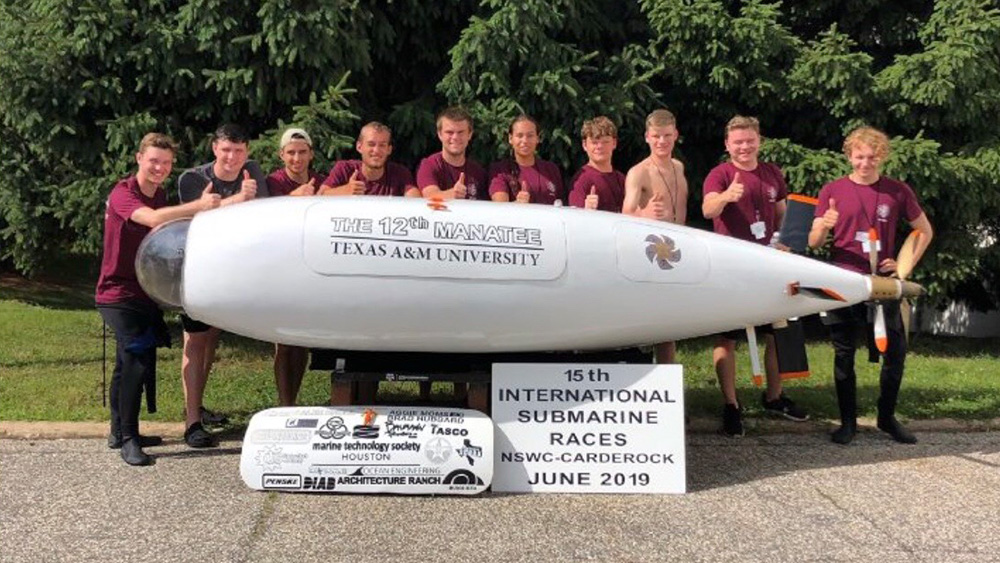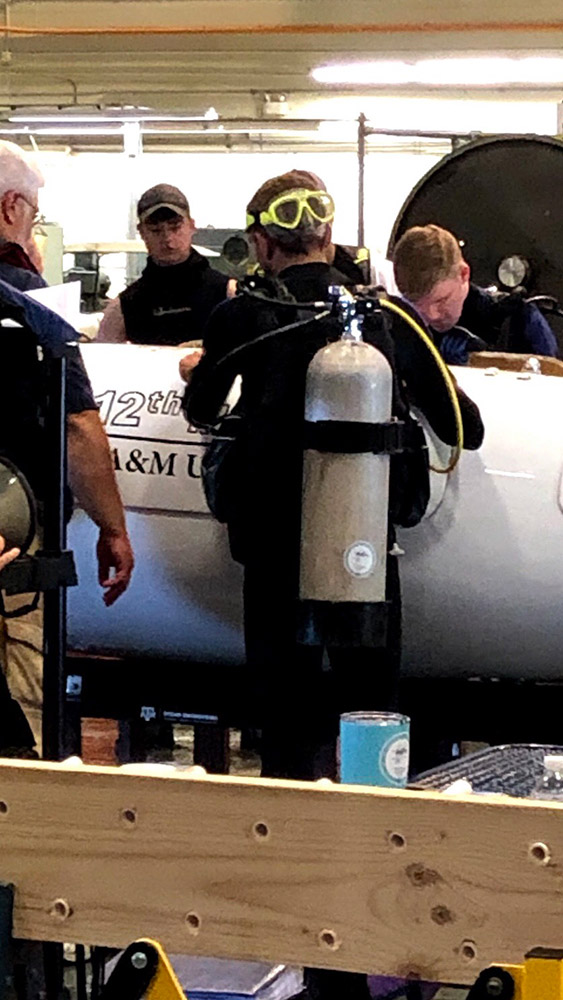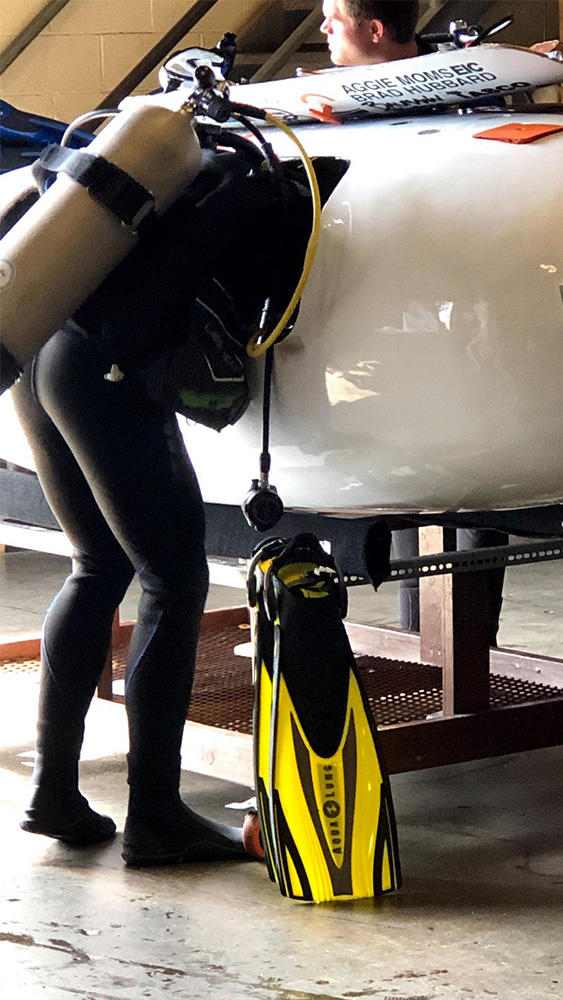
Daniel Toerner, a senior in the Department of Ocean Engineering at Texas A&M University, participated in the International Submarine Races competition in Bethesda, Maryland. According to the competition’s website, “the race provides a platform for teams at all grade levels to develop a one or two-person “wet” submarine. Crew members breathe SCUBA from the air supply carried aboard the submarine and propel the submarine over an underwater course. Each submarine is unique, designed from “scratch”, and relies upon novel techniques for propulsion and guidance.”
The competition is a culmination of the team’s work over the last year to race against students from around the world in an underwater course.
Q: What is your role on the team and how did you get there?
A: My role is captain of the team. I got this position by attending the meetings and adding worthwhile contributions to the design and integration of many parts in the submarine. Along with this, I was able to effectively communicate why something was being done and what else needed to be done in order to complete the task.

Q: What does the team go through each year to reach the point of competition?
A: Every year the team has to go through the process of designing, procuring, manufacturing and constructing everything that goes into the submarine. This year, there was a major focus on developing more efficient drive-train, control and safety systems. We start working in August, during the second or third week of school, and nearly every week after that until the competition in June. This includes working during winter and summer breaks where, even though we don’t hold any official meetings, there are team members that stay in College Station to work on it and some who come to town when they can. Throughout the year, we also test the submarine multiple times at the Offshore Technology Research Center to check the performance of our systems.
Q: What is a challenge your team faced this year and how did you overcome it?
A: One of the biggest challenges we had this year was making the drive-train system more efficient and reliable than our previous system. We tried two different types of drive-trains, one using a differential system and the other using a solid shaft that ran through the main gearbox but allowed the pilots to pedal in the direction that was most comfortable to them, making the pilots pedal at the same rate. We decided to use the solid shaft due to the fact that it was more reliable underwater. Once we got that system working, the next obstacle we ran into was the lift the submarine had once it got to speed. We finally found the fix to this at the races after going through much troubleshooting. We overcame both of these challenges by working together as a team to find what was causing our issues (material issues, air trapping, gear ratios, and propeller pitch).

Q: How has being on the submarine team impacted your experience as an ocean engineering student?
A: This organization has helped me learn that even though something may work in a design or simulation, it may not work in real life. It has given me the opportunity to have very valuable hands-on experience that encompasses some very important concepts used in naval architecture, mechanical systems and ocean engineering. It has also helped me network, as many former students still ask about the submarine, offer insight on how to make it better and look for students on the team when they are looking for potential employees.